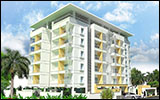Wonders of Europe Part 4: Magnificent Cologne Cathedral-Architectural Wonder of Europe
By Dr. Eugene DSouza, Moodubelle
Bellevision Media Network
Udupi, 25 Aug 2013: On 15 July, the seventh day of the ‘Wonders of Europe’ tour we proceeded to another important country-Germany and our destination was Cologne, the home of the magnificent Cologne Cathedral which could be considered as an architectural wonder of Europe that had its origin in the medieval period.
The distance between Brussels and Cologne in the North-western Germany is around 213 kilometers requiring about 3 hours. The greenery of rural Belgium and later Germany was quite appealing. We also could view few wind-mills both in Belgium and Germany. For the first time we could see a huge power-plant emitting thick smoke in Germany on the way to Cologne. Nearing the Cologne city we passed by the side of Germany’s premier river-Rhine and within short period we were in the historic city of Cologne.
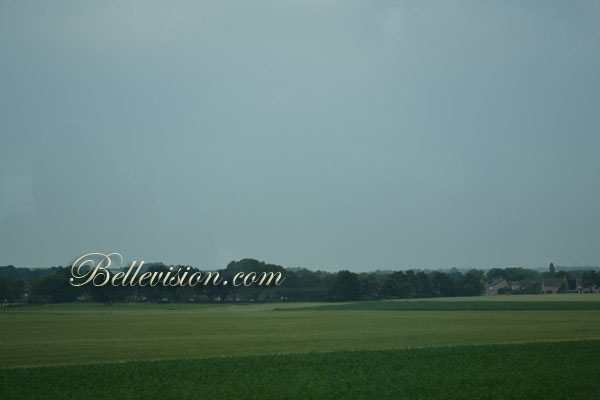
.jpg)
.jpg)
.jpg)
.jpg)
.jpg)
.jpg)
.jpg)
.jpg)
.jpg)
.jpg)
.jpg)
Cologne is Germany’s fourth-largest city after Berlin, Hamburg, and Munich and is located on both sides of the Rhine River. The city’s famous Cologne Cathedral is the seat of the Catholic Archbishop of Cologne and the University of Cologne is one of Europe’s oldest and largest universities.
The history of Cologne goes back to the Roman period as it has been believed that the city was originally founded and established by the Romans in 50 AD and was the capital of the Roman province of Germania Inferior and the headquarters of the military in the region until it was occupied by the Franks in 462. Maternus, who was elected as bishop in 313, was the first known bishop of Cologne and in 785, Cologne became the seat of an archbishopric.
During the Middle Ages Cologne flourished as one of the most important major trade routes between east and west in Europe. Until World War II the city had undergone several other occupations by the French and also the British. Cologne was one of the most heavily bombed cities in Germany during World War II. It has been a major cultural center of the Rhineland and is home to more than thirty museums and hundreds of galleries.
Besides its economic and political significance, Cologne also became an important center of medieval pilgrimage, when Cologne’s Archbishop Rainald of Dassel gave the relics of the ‘Three Wise Men’ (Magi) to Cologne’s Cathedral in 1164, after they had been captured from Milan. Besides the Three Magi, Cologne preserves the relics of Saint Ursula and St. Albert the Great.
Cologne lost its status as a free city during the French occupation period and this region later became part of Napoleon’s Empire. In 1815, at the Congress of Vienna, following the defeat of Napoleon Bonaparte, Cologne was made part of the Kingdom of Prussia. During the 19th and 20th centuries, Cologne absorbed numerous surrounding towns and grew in size and population.
During World War I, Cologne was the target of several but minor air raids and survived the hostilities without significant damage. Until 1926, Cologne was occupied by the British Army of the Rhine under the terms of the armistice and the subsequent Versailles Peace Treaty.
Cologne prospered during the Weimar Republic (1919–33) and progress was made especially with respect to public governance, city planning, housing and social affairs. Social housing projects were considered exemplary and copied by other German cities.
During World War II, Cologne was a Military Area Command Headquarters and suffered 262 air raids by the Western Allies. By the end of the war, practically all of Cologne’s pre-war Jewish population of 11,000 had been deported or killed by the Nazis and six synagogues of the city were destroyed. The destruction of 95% of the city center during World War II included the famous Twelve Romanesque churches and several other monuments.
Magnificent Cologne Cathedral: As our bus approached the city centre, I could view the tall spires of the Cologne Cathedral from the bus window. It was an awesome sight to see one of the largest places of worship in the world. After alighting from the bus, we walked for about five minutes and reached the premises of the Cathedral where we could see tourists from different parts of the world viewing astonishingly the gigantic structure of the magnificent Cologne Cathedral and clicking pictures.
The Cologne Cathedral is one of Germany’s most important architectural monuments. The Cathedral was dedicated to Saint Peter and the Blessed Virgin Mary. This Gothic masterpiece, situated in the heart of Cologne is the third tallest cathedral in the world and boasts the highest church spires ever built. The Cologne Cathedral is a Roman Catholic Church and is the seat of the Archbishop of Cologne and the administrative centre of the Archdiocese of Cologne. It is a renowned monument of German Catholicism in the style of Gothic architecture and is a World Heritage Site. It is Germany’s most visited landmark, attracting an average of 20,000 people a day.
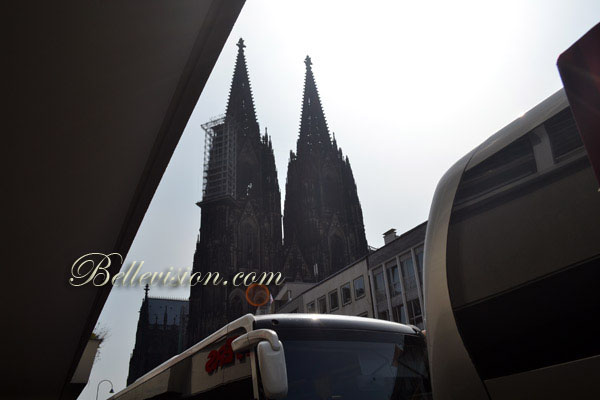
.jpg)
.jpg)
.jpg)
.jpg)
.jpg)
.jpg)
.jpg)
.jpg)
.jpg)
.jpg)
.jpg)
.jpg)
.jpg)
.jpg)
.jpg)
.jpg)
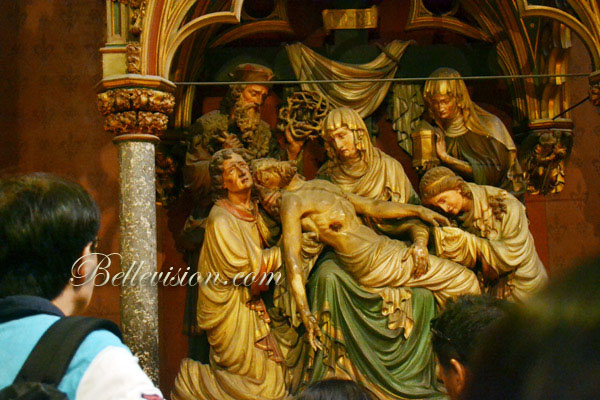
.jpg)
.jpg)
.jpg)
.jpg)
.jpg)
.jpg)
.jpg)
.jpg)
.jpg)
.jpg)
.jpg)
.jpg)
.jpg)
.jpg)
.jpg)
.jpg)
.jpg)
.jpg)
.jpg)
.jpg)
.jpg)
.jpg)
.jpg)
.jpg)
.jpg)
.jpg)
.jpg)
.jpg)
.jpg)
.jpg)
.jpg)
.jpg)
.jpg)
.jpg)
The history of the Cologne Cathedral is quite interesting. When the construction of the present Cologne Cathedral was started in 1248, the site had been occupied by several previous structures, the earliest of which may have been a grain store, perhaps succeeded by a Roman temple built by Mercurius Augustus. From the 4th century the site was occupied by Christian buildings, including a square edifice known as the "oldest cathedral" and commissioned by Maternus, the first Christian bishop of Cologne. The second church, the so-called "Old Cathedral", was completed in 818. This was destroyed by fire on 30 April 1248, during demolition in preparation for a new cathedral.
In 1164, the Archbishop of Cologne, Rainald of Dassel acquired the relics of the Three Kings which the Holy Roman Emperor, Frederick Barbarossa had taken from the Basilica of Sant’Eustorgio, Milan, Italy. The relics have great religious significance and drew pilgrims from all over Christendom. As it was considered important that these relics should be properly housed, the grand plan of constructing the cathedral in the new style of Gothic architecture was set into motion.
Archbishop Konrad von Hochstaden laid the foundation stone for the Cathedral on 15 August 1248. The eastern wing of the cathedral was completed under the direction of Master Gerhard and was consecrated in 1322 and sealed off by a temporary wall so it could be in use as the work on other section of the cathedral continued. In the mid 14th century work on the west front commenced under Master Michael. This work halted in 1473, leaving the south tower complete up to the belfry level and crowned with a huge crane that remained in place as a landmark of the Cologne skyline for 400 years.
With the 19th century romantic enthusiasm for the Middle Ages, and encouraged by the discovery of the original plan for the facade, it was decided to complete the cathedral and work resumed in 1842 to the original design of the surviving medieval plans and drawings. The construction of the cathedral using the then existing technology continued and the entire work completed in 1880.
The completion of Germany’s largest cathedral was celebrated as a national event on 14 August 1880, 632 years after the construction had begun. The celebration was attended by Emperor William I.
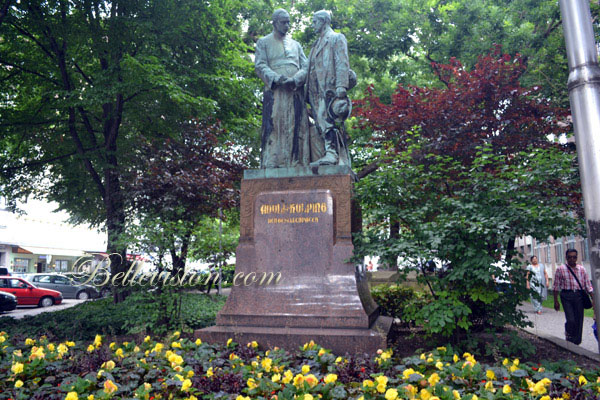
.jpg)
.jpg)
.jpg)
.jpg)
.jpg)
.jpg)
.jpg)
.jpg)
.jpg)
.jpg)
.jpg)
.jpg)
After the completion of the entire structure, the length of the Cologne Cathedral is 144.5 meters (474 ft), width is 86.5 meters (284 ft) and its towers are approximately 157 meters (515 ft) tall. The cathedral is the largest Gothic church in Northern Europe and has the second-tallest spires and largest facade of any church in the world.
During the World War II, Cologne Cathedral was hit during allied bomb raids. However, the Cathedral survived the bombing but became surrounded by a city in ruins. After the war, the Cathedral underwent major reparations, which finished in 1956.
Some repair and maintenance work is constantly being carried out in some section of the building, which is almost never completely free of scaffolding, since wind, rain, and pollution slowly corrode the stones over the many years of its existence.
In 1996, the cathedral was added to the UNESCO World Heritage List of culturally important sites. As a World Heritage Site, and with its convenient position on tourist routes, Cologne Cathedral is a major tourist attraction, the visitors including many who travel there as a Christian pilgrimage.
On 18 August 2005, Pope Benedict XVI visited the Cologne Cathedral during his apostolic visit to Germany as part of World Youth Day 2005 festivities.
It was an experience of life time to view the external structure and internal treasures of the magnificent Cologne Cathedral. A copy of the finials, same size as the two atop the Cathedral, could be seen just below the main square of the Cathedral. Nearing the main entrance I was practically awestruck looking at the intricate designs and statues of different saints adorning the main entrance. The statue of Virgin Mary with Child Jesus could be seen placed prominently at the centre of the entrance as two metallic doors opened on two sides of the statue.
As we entered the Cathedrals, the deep naves with Gothic pointed arches presented a beautiful picture of the interior. The gigantic pillars with statues of saints supporting the upper structure of the enormously large Cathedral were just to be seen to be believed.
To the right side of the main entrance, there is an altar with the image of the Mother of Sorrows holding the body of Jesus after being taken from the Cross and surrounded by few disciples. A number of tourists were seen lighting cup-candles in front of the altar.
The stain glasses with a number of panels depicting various scenes from the life of Christ and the images of the apostles and saints, the three dimensional Stations of the Cross, the painting of the Assumption of Mother Mary, the old statue of St. Christopher and a number of statues and other artifacts are important attractions within the Cathedral.
One of the treasures of the cathedral is the High Altar, which was installed in 1322. It was constructed of black marble, with a solid slab 15 feet (4.6 m) long forming the top. The front and sides are overlaid with white marble niches into which are set figures, with the Coronation of the Virgin at the centre.
The most important work of art in the Cathedral is the Shrine of the Three Kings, commissioned by Philip von Heinsberg, archbishop of Cologne from 1167 to 1191 and created by Nicholas of Verdun. It is traditionally believed to hold the remains of the Three Wise Men, whose relics were acquired by Frederick Barbarossa following the conquest of Milan in 1164. The shrine was opened in 1864 and was found to contain bones and garments believed to have been of the Three Wise Men.
Near the sacristy is the Gero Cross, a large crucifix carved in oak. Believed to have been commissioned around 960 for Archbishop Gero, it is the oldest large crucifix north of the Alps and the earliest-known large free-standing Northern sculpture of the medieval period.
The chapels also contain the tombs of many of the Archbishops of Cologne with the statues of those Archbishops in sleeping position. In one of these statues a dog at the feet of the Archbishop could be seen.
The Cathedral has eleven church bells, four of which date back to the middle ages. The first was the 3.8-ton ‘Bell of the Three Kings’ cast in 1418, installed in 1437, and recast in 1880. Two of the other bells, the Pretiosa (10.5 tons; at that time the largest bell in the Western world and the Speciosa (5.6 tons) were installed in 1448 still in service even today.
During the 19th century, as the building neared completion, there was a desire to extend the number of bells. This was facilitated by Kaiser William I who gave French bronze cannon, captured in 1870–71, for this purpose.
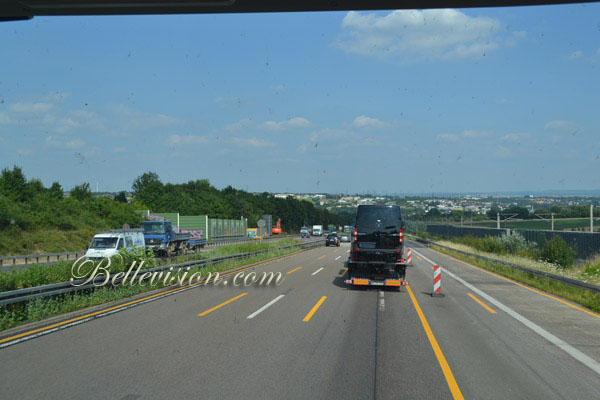
.jpg)
.jpg)
.jpg)
.jpg)
.jpg)
.jpg)
.jpg)
.jpg)
.jpg)
.jpg)
After viewing the interior of the Cathedral, and having had lunch, we strolled through the busy shopping street swarmed by the tourists from different parts of the world. Shops displaying verities of articles right from perfumes to clothes, electronic gadgets, chocolates and the famous Eau de Cologne could be seen lined up throughout the busy shopping street.
After spending some time in the premises of the Cologne Cathedral we moved to our next destination-Mannheim at a distance of 243 kilometers from Cologne in South Western Germany where we halted for the night before proceeding to Switzerland.
(Internet sources used for the information on Cologne and Cologne Cathedral)
Also Read
Part 1 : ’Wonders of Europe’ - London in a Day
Part 2 : Memorable Tour Through Historic Paris and Enchanting Disneyland
Part 3: Onward to beautiful Brussels and classical Amsterdam
 Write Comment |
Write Comment |  E-Mail To a Friend |
E-Mail To a Friend |
 Facebook |
Facebook |
 Twitter |
Twitter |
 Print
Print 



